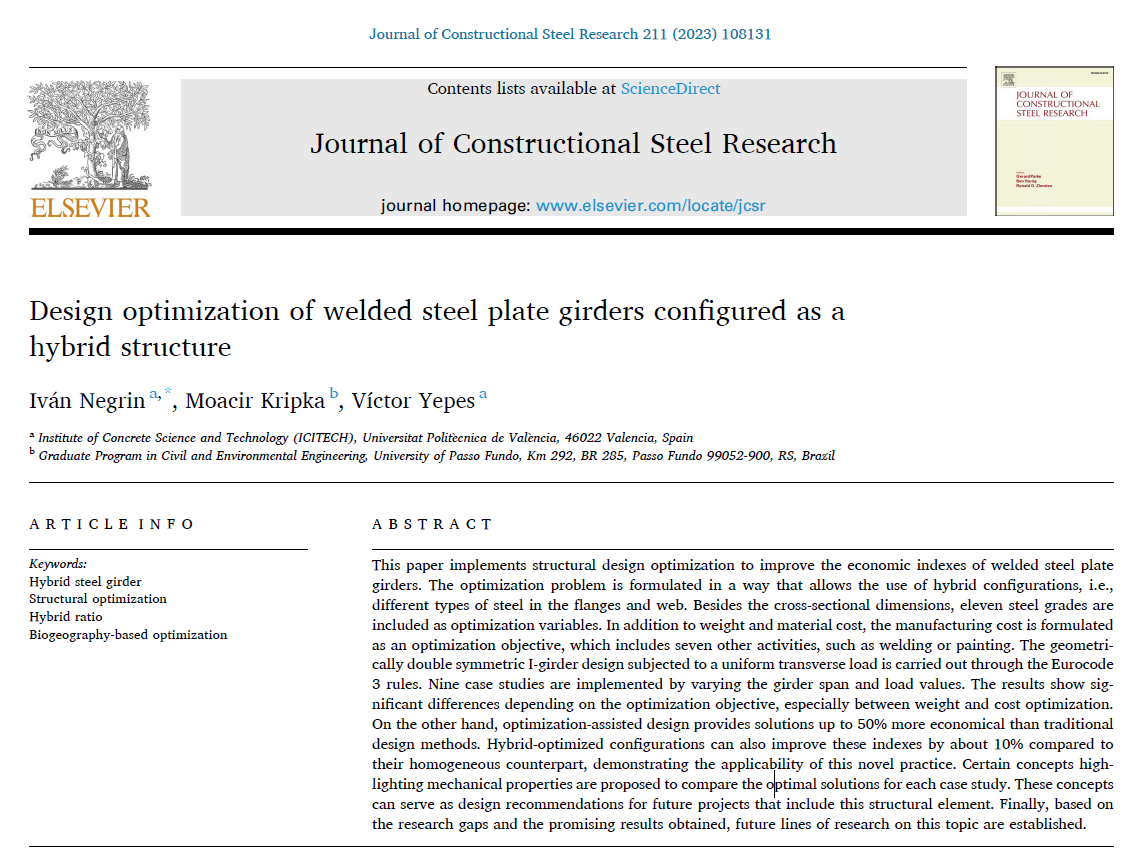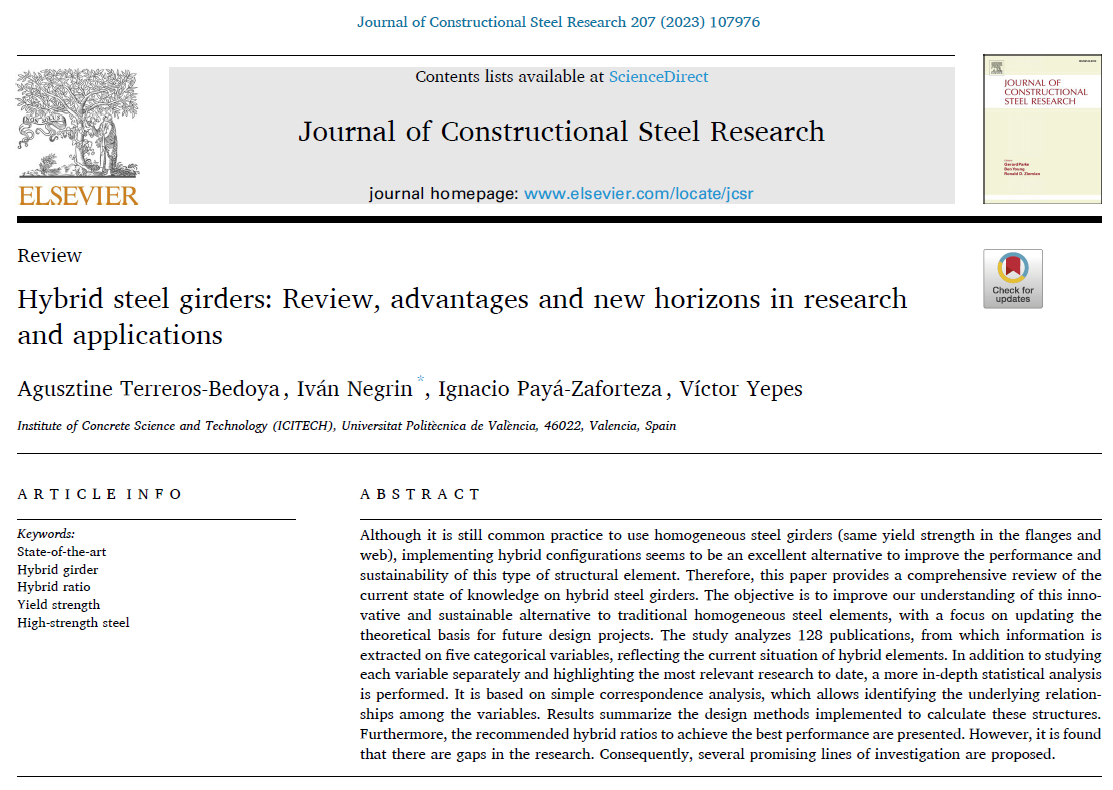 Acaban de publicarnos un artículo en la revista Advances in Civil Engineering (revista indexada en el JCR) donde se optimizan las vigas de acero híbridas para minimizar los costos de fabricación. El estudio se enmarca dentro del proyecto de investigación HYDELIFE que dirijo como investigador principal en la Universitat Politècnica de València.
Acaban de publicarnos un artículo en la revista Advances in Civil Engineering (revista indexada en el JCR) donde se optimizan las vigas de acero híbridas para minimizar los costos de fabricación. El estudio se enmarca dentro del proyecto de investigación HYDELIFE que dirijo como investigador principal en la Universitat Politècnica de València.
El objetivo del artículo es optimizar las vigas de acero híbridas transversal-longitudinalmente (TLH) para minimizar los costos de fabricación, basándose en investigaciones anteriores sobre vigas híbridas transversalmente. Explora la ubicación de los puntos de transición en las vigas TLH para maximizar las ventajas de la configuración mecánica, y ofrece recomendaciones para establecer transiciones y configuraciones de acero en función de los niveles de tensión y las longitudes de los elementos.
La metodología implica definir estudios de casos, modelar estructuras híbridas transversales y longitudinalmente, formular un problema de optimización para explorar las configuraciones de TLH y establecer restricciones de diseño. El estudio utiliza técnicas de optimización para determinar el número y las posiciones óptimos de los puntos de transición a lo largo del elemento, así como las configuraciones de los materiales para los diferentes tramos de vigas TLH.
Las conclusiones más importantes de este trabajo son las siguientes:
- El estudio muestra los beneficios económicos de las vigas de acero híbridas transversal-longitudinalmente (TLH) en comparación con los diseños homogéneos tradicionales y optimizados, y muestra una reducción de costos de fabricación de más del 50%.
- Se ha descubierto que las configuraciones TLH son más eficaces para elementos de mayor envergadura, con recomendaciones específicas para los puntos de transición y las configuraciones de materiales en función de los niveles de tensión.
- La metodología propuesta ofrece un enfoque de diseño sostenible al optimizar los elementos del TLH para mejorar los índices económicos y las consideraciones ambientales, lo que allana el camino para futuras investigaciones sobre el comportamiento estructural, el análisis conjunto y la implementación más amplia de criterios de sostenibilidad.
Abstract:
I-section girders with different types of steel in the flanges and web (fyf > fyw, respectively) are known as transverse hybrid girders. These have proven to be more economical than their homogeneous counterparts. However, the use of hybrid configurations in the longitudinal direction of the element has yet to be studied. This paper uses optimization techniques to explore the possibility of constructing transverse and longitudinally hybrid (TLH) steel girders. The optimization objective is to minimize the manufacturing cost, including seven activities besides the material cost. The geometrically double symmetric I-girder design subjected to a uniform transverse load is performed using Eurocode 3 specifications. Nine case studies are implemented, varying the element span (L) and the applied load. The results show that establishing various configurations along the length of the element is beneficial. The optimum number of transition points is six, meaning the girder will have four configurations, i.e., one central and three others symmetrically distributed toward each half of the element. The optimum position for the first transition would be at (L/2), the second at (L/2), and the third at (L/2). The optimum extreme configuration is usually homogeneous (fyf = fyw = 235 MPa). The others increase the steel quality in the plates, maintaining hybrid arrangements to reach the central one that usually remains with S700 steel for the flanges and S355 for the web. The study shows that TLH configurations are more effective for elements with larger spans. By applying the formulated design recommendations in a different case study, the manufacturing cost dropped by over 50% compared to the traditionally designed element and by more than 10% relative to the optimized element with a homogeneous configuration. The study’s limitations and encouraging results suggest future lines of research in this area.
Reference:
NEGRÍN, I.; KRIPKA, M.; YEPES, V. (2024). Optimized Transverse-Longitudinal Hybrid Construction for Sustainable Design of Welded Steel Plate Girders. Advances in Civil Engineering, 2024:5561712. DOI:10.1155/2024/5561712.
Como la publicación está en abierto, os la dejo para su descarga.


